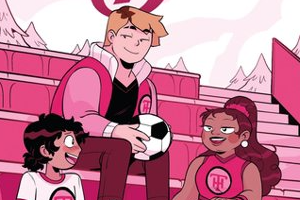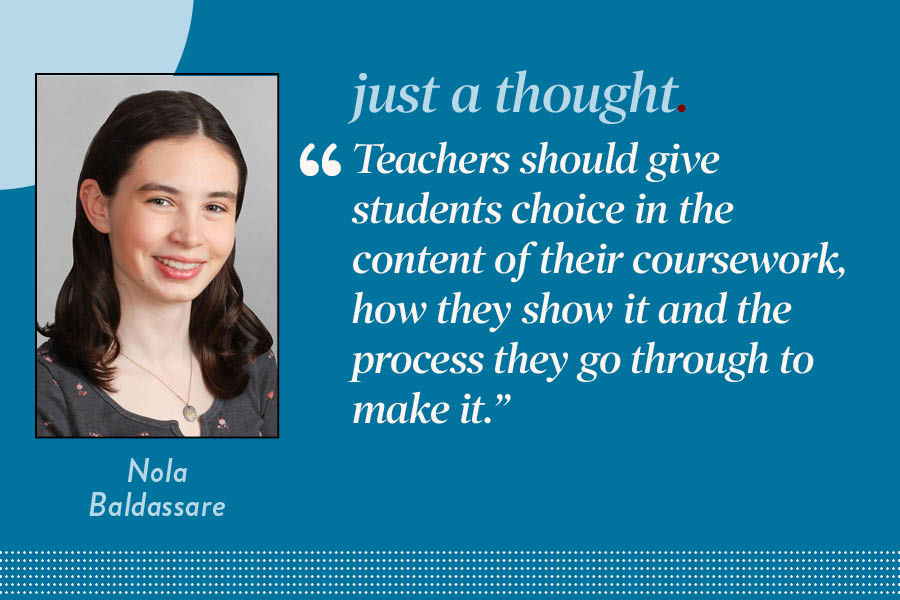Breaking the mold, graphic novel ‘Belle of the Ball’ challenges LGBTQ+ tropes

Good Reads
“Belle of the Ball” by Mari Costa focuses on the relationship drama between Belle Hawkins, her crush Regina Moreno, and her crush’s girlfriend Chloe Kitagawa.
May 19, 2023
“Belle of the Ball” by Mari Costa starts with Belle, also known as Hawkins, nervously asking out her crush, Regina. To Belle’s embarrassment, Regina explains that she is already dating Chloe. Regina has her whole life planned out, but her girlfriend is struggling with her grades, which derails Regina’s plans for the future. After Regina manipulates Belle into being Chloe’s English tutor, drama between the three characters ensues.
“Belle of the Ball” explores some not commonly seen LGBTQ+ representation, and although it felt over-dramatized at parts, it shows that all relationships can have issues, and sometimes things don’t work out.
Often in shows and media LGBTQ+ relationships are depicted as perfect and never having any problems. But Ms. Costa challenges that narrative. For example, the main theme of the novel is the difficulties that Regina and Chloe face as a couple. Regina and Chloe have different wants and needs, which leads them to argue or fight.
“Belle of the Ball” breaks the mold for LGBTQ+ books or novels because Chloe and Regina are the popular kids at their school. Ms. Costa not only makes these two characters popular and well-liked by the whole school, but they are openly dating. This also adds to the dynamic between the two, and a more subtle conflict in their relationship is how this pressure of being a perfect couple affects both of them.
The art style is captivating and beautiful; the book is drawn completely in shades of pink. I particularly enjoyed this art style because it gave the book a unifying theme and color scheme. The pink could also be showing the different aspects of femininity that are on display in the three main characters: they all are women in their own ways, and they are not all one shade.
Although some of the relationship drama was forced, the book as a whole was well-written and captivating. The main plot of the book, the love triangle, explores each of the character’s inner motivations and feelings, leaving no character one-dimensional. For example, Regina is constantly propelled by her determination to succeed, even if that negatively affects her relationship with her girlfriend, whereas Chloe is more focused on current events and just getting through high school rather than her future.
“Belle of the Ball” shows the complexities of any relationship, with a little extra drama to make it interesting. “Belle of the Ball” showcases how to correctly add depth to characters, and create an overall touching and beautiful read.



























































